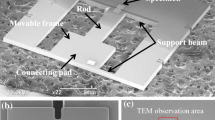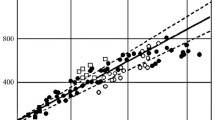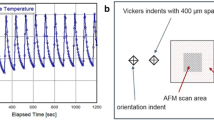Abstract
The electrochemical scanning method of detecting fatigue in metals requires a surface oxide film with high electrical resistance but low fracture resistance. Both of these properties are controlled by the density of defects in the oxide. In this study, the fracture of various oxide films on aluminum was observed during fatigue experiments in a photoelectron microscope. The effects of the oxide thickness and defect density were investigated. The defect density exerts a strong influence on the fracture of thick (>5 nm) oxides, but has no effect on the fracture of thin (<5 nm) oxides. A 3 nm oxide of low defect density is recommended for the electrochemical detection of fatigue.
Similar content being viewed by others
References
W. J. Baxter:Metall. Trans. A, 1980, vol. 11A, pp. 1999–2008.
D. R. Arnott, W. J. Baxter, and S. R. Rouze:J. Electrochem. Soc., 1981, vol. 128, pp. 843–47.
W. J. Baxter and S. R. Rouze:Metall. Trans. A, 1976, vol. 7A, pp. 647–54.
Author information
Authors and Affiliations
Additional information
STANLEY R. ROUZE, formerly Senior Research Scientist, now retired,
Rights and permissions
About this article
Cite this article
Baxter, W.J., Rouze, S.R. Effect of oxide thickness on electrochemical detection of fatigue. Metall Trans A 13, 1573–1575 (1982). https://doi.org/10.1007/BF02644797
Received:
Issue Date:
DOI: https://doi.org/10.1007/BF02644797




